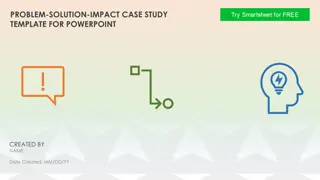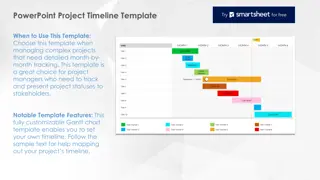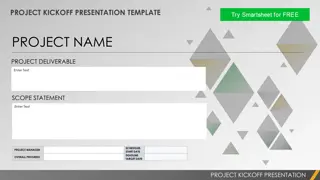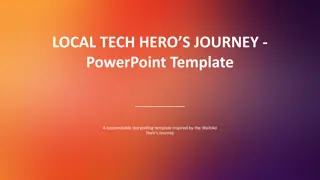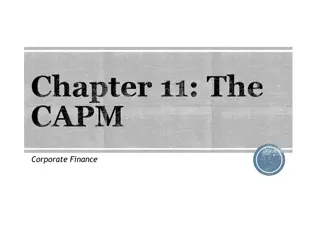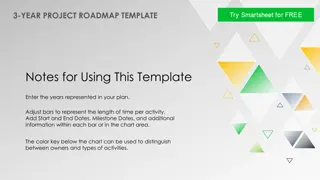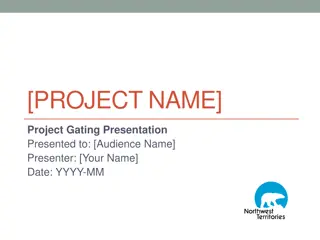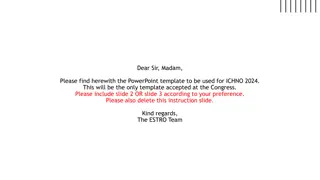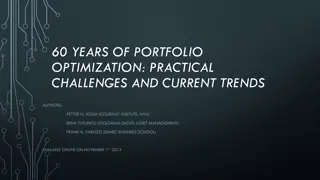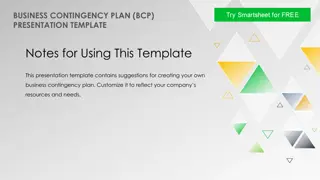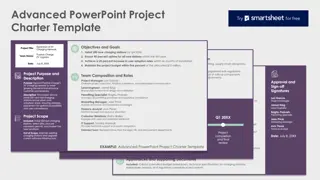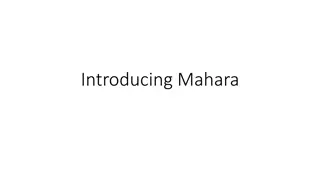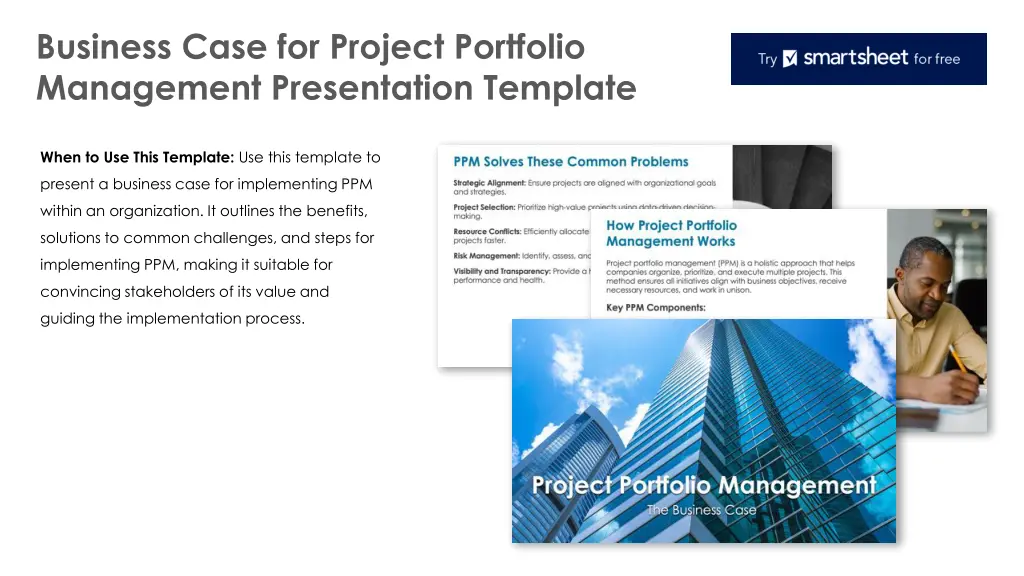
Benefits and Challenges of Project Portfolio Management
Discover how Project Portfolio Management (PPM) can help organizations align projects with strategic goals, optimize resources, and overcome common challenges. Explore the benefits of PPM, including improved project selection, enhanced decision-making, and competitive advantage. Learn how PPM addresses resource conflicts, enhances visibility, and drives accountability for results.
Download Presentation

Please find below an Image/Link to download the presentation.
The content on the website is provided AS IS for your information and personal use only. It may not be sold, licensed, or shared on other websites without obtaining consent from the author. If you encounter any issues during the download, it is possible that the publisher has removed the file from their server.
You are allowed to download the files provided on this website for personal or commercial use, subject to the condition that they are used lawfully. All files are the property of their respective owners.
The content on the website is provided AS IS for your information and personal use only. It may not be sold, licensed, or shared on other websites without obtaining consent from the author.
E N D
Presentation Transcript
Business Case for Project Portfolio Management Presentation Template When to Use This Template: Use this template to present a business case for implementing PPM within an organization. It outlines the benefits, solutions to common challenges, and steps for implementing PPM, making it suitable for convincing stakeholders of its value and guiding the implementation process.
Project Portfolio Management The Business Case
How Project Portfolio Management Works Project portfolio management (PPM) is a holistic approach that helps companies organize, prioritize, and execute multiple projects. This method ensures all initiatives align with business objectives, receive necessary resources, and work in unison. Key PPM Components: Defining all projects within the portfolio Prioritizing projects to maximize value Allocating resources efficiently across projects Tracking progress and performance of projects
PPM Solves These Common Problems Strategic Alignment: Ensure projects are aligned with organizational goals and strategies. Project Selection: Prioritize high-value projects using data-driven decision- making. Resource Conflicts: Efficiently allocate resources to complete key projects faster. Risk Management: Identify, assess, and mitigate risks across the portfolio. Visibility and Transparency: Provide a holistic view of project performance and health.
PPMs Many Benefits, Part 1 Strategic Alignment: Projects align with the organization s goals. Improved Project Selection: Projects are selected based on business value. Better Project ROI: Better project selection and execution raise ROI. Resource Optimization: Resources are allocated to prioritized projects. Faster Project Completion: Prioritization leads to faster completion of key projects. Budget Alignment: Centralized management ensures alignment with department budgets.
PPMs Many Benefits, Part 2 Project Transparency: PPM software provides clear, real-time project visibility through dashboards. Collaborative Decision-Making: Transparency creates a collaborative environment. Adaptability to Market Changes: Aligning strategy with market conditions enhances adaptability. Risk Management: Clear processes strengthen risk management efforts. Performance Measurement: Focused metrics drive consistent performance evaluation. Accountability for Results: Built-in accountability ensures ownership of outcomes. Better Long-Term Planning: Strategic alignment enables longer-term thinking. Competitive Advantage: Effective PPM provides a competitive edge.
Overcoming PPM Challenges High Initial Investment: Assess and compare tools and staffing to ensure cost-effectiveness. Resistance to Change: Communicate benefits clearly. Provide training and support. Potentially Long Implementation: Develop a clear implementation plan. Use Lean methodologies for flexibility. Required Skill Sets: Offer targeted training programs. Hire or develop talent with needed skills. Ongoing Administrative Costs: Automate PPM processes. Regularly optimize tasks to reduce costs. Risk of Inflexibility: Use adaptable and scalable frameworks. Foster a culture of continuous improvement. Potential for Bureaucracy: Streamline processes. Empower project managers with decision-making authority.
Potential Future State with PPM Optimized Portfolio: Achieve a well-balanced portfolio with projects that drive maximum value. Enhanced Agility: Improve the ability to respond quickly to market changes and new opportunities. Data-Driven Culture: Foster a culture of data-driven decision-making and continuous improvement. Strategic Growth: Enable strategic growth by aligning projects with long- term business objectives. Sustained Success: Ensure the sustained success of your project portfolio through continuous monitoring and improvement.
Potential Next Steps Assessment: Evaluate current project management practices and costs, and compare them with the projected setup costs and ROI of PPM. Commitment: Leadership decides to commit to the PPM structure. Planning: Develop a detailed implementation plan with a clear budget, milestones, and deliverables. Tool Selection: Select PPM tools that best meet the organization s needs. Training: Provide comprehensive training for all stakeholders to ensure smooth adoption. Pilot Implementation: Launch a pilot program to test and refine processes. Full Rollout: Gradually roll out the PPM system across the organization. Continuous Improvement: Establish a feedback loop to continually improve PPM practices.
DISCLAIMER Any articles, templates, or information provided by Smartsheet on the website are for reference only. While we strive to keep the information up to date and correct, we make no representations or warranties of any kind, express or implied, about the completeness, accuracy, reliability, suitability, or availability with respect to the website or the information, articles, templates, or related graphics contained on the website. Any reliance you place on such information is therefore strictly at your own risk.



